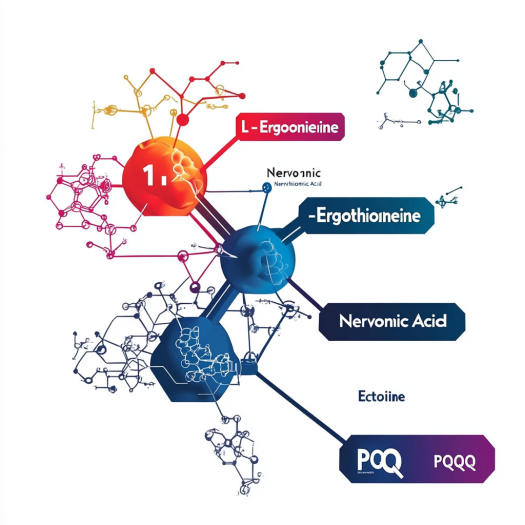
When it comes to understanding the importance of C15 fatty acids, you might be wondering: What foods actually contain them? Well, you’re not alone in the curiosity!
C15 fatty acids, or pentadecanoic acid, are found in a variety of natural sources, particularly animal fats and dairy products. They are essential for human health, supporting metabolic processes and cellular function.
The role of these fatty acids in our diet is often overlooked. But knowing where to find them can be a game-changer for your health.
What Are C15 Fatty Acids, and Why Should You Care?
C15 fatty acids, also known as pentadecanoic acid, play a vital role in the body. They are a type of saturated fatty acid that can influence everything from inflammation to metabolic health.
C15 fatty acids are important for energy metabolism, and they have anti-inflammatory properties. They can help regulate cholesterol levels and support overall heart health.

These acids are not as widely recognized as omega-3s, but they deserve just as much attention for their health benefits.
Where Do You Find C15 Fatty Acids?
While they may not be in every food, there are several sources rich in C15 fatty acids. You’ll find these fats primarily in animal-based foods, but certain plant-based options also contain trace amounts.
Animal fats, particularly from dairy products and meat, are the best sources of C15 fatty acids. Fish and certain plant oils also provide small amounts of this fatty acid.
Dairy products such as milk, cheese, and butter are particularly abundant in C15 fatty acids. Grass-fed cows, in particular, tend to have higher levels of these beneficial fats in their milk.
Which Animal Products Contain C15 Fatty Acids?
If you’re wondering where to get your dose of C15 fatty acids, animal products like beef, lamb, and dairy are the top sources.
Beef, lamb, and grass-fed dairy products are excellent sources of pentadecanoic acid.

Meat, especially from ruminant animals like cows and sheep, contains significant amounts of C15 fatty acids1. These acids are found in the fat of these animals, so choosing cuts with higher fat content can increase your intake.
Grass-fed beef and lamb are particularly beneficial for C15 fatty acid intake because they have higher levels of these fats compared to grain-fed counterparts. When animals graze on grass, their fat composition is richer in beneficial omega-3s and C15 fatty acids.
Additionally, dairy products such as whole milk, butter, and cheese are rich sources of pentadecanoic acid2. Not all dairy products have the same amount, so opting for full-fat, grass-fed versions can provide the highest levels.
Here’s a quick look at the C15 content in various animal-based foods:
| Food Item | C15 Fatty Acid Content (per 100g) |
|---|---|
| Grass-fed Beef | 0.3 – 0.5 g |
| Lamb | 0.3 – 0.4 g |
| Full-fat Butter | 0.1 – 0.2 g |
| Cheese (Cheddar) | 0.1 g |
| Whole Milk | 0.05 – 0.1 g |
Plant-Based Sources of C15 Fatty Acids
Although animal products are the primary sources, some plant oils contain small amounts of C15 fatty acids. These sources, however, are not as abundant as their animal counterparts.
Certain plant oils like palm oil and coconut oil contain minor levels of pentadecanoic acid, but they are not as significant as meat and dairy sources.
How Do C15 Fatty Acids Benefit Your Health?
The health benefits of C15 fatty acids are numerous and impressive. They have been shown to help with inflammation, metabolism, and even the prevention of chronic diseases.
C15 fatty acids are known for their anti-inflammatory effects, which can help reduce the risk of cardiovascular disease, diabetes, and obesity. They also promote healthy cholesterol levels, which is crucial for heart health.
Additionally, pentadecanoic acid has been linked to better metabolic function and may assist with weight management by improving insulin sensitivity. There’s also growing evidence that it plays a role in maintaining a healthy gut microbiome, supporting digestive health.

How Can You Incorporate C15 Fatty Acids into Your Diet?
So, how can you add more C15 fatty acids to your diet? It’s simple. Focus on integrating grass-fed animal products and a variety of whole dairy products into your meals.
Start by adding grass-fed beef, lamb, or full-fat dairy into your weekly meals for a natural dose of C15 fatty acids. You can also enjoy butter, cheese, or even whole milk in moderation to benefit from these essential fats.
Here’s an example of how you might incorporate these into a day’s meals:
- Breakfast: Scrambled eggs with a dollop of butter and a side of cheese.
- Lunch: Grass-fed beef salad with olive oil and avocado.
- Dinner: Grilled lamb chops with roasted vegetables and a side of whole milk.
Remember, balance is key! Enjoy these foods in moderation to avoid excess fat in your diet.
What Are the Signs of C15 Fatty Acid Deficiency?
A lack of C15 fatty acids in your diet can lead to a variety of health issues, especially related to metabolic and inflammatory functions. Symptoms of a deficiency might include fatigue, weight gain, and poor digestion.
Deficiency in C15 fatty acids can lead to poor metabolism, which might manifest as low energy levels, difficulty losing weight, and inflammation-related health issues.
Fortunately, making simple adjustments to your diet can help restore balance. If you suspect a deficiency, it’s always a good idea to consult with a healthcare professional to determine the best course of action.

Conclusion
C15 fatty acids are crucial for your overall health. By adding more animal-based products like grass-fed beef and dairy to your diet, you can naturally increase your intake of these beneficial fats.
To learn more about natural ingredients like Nervonic Acid, which is also linked to cognitive health and found in products from Santa Biotech, feel free to explore our offerings here.

